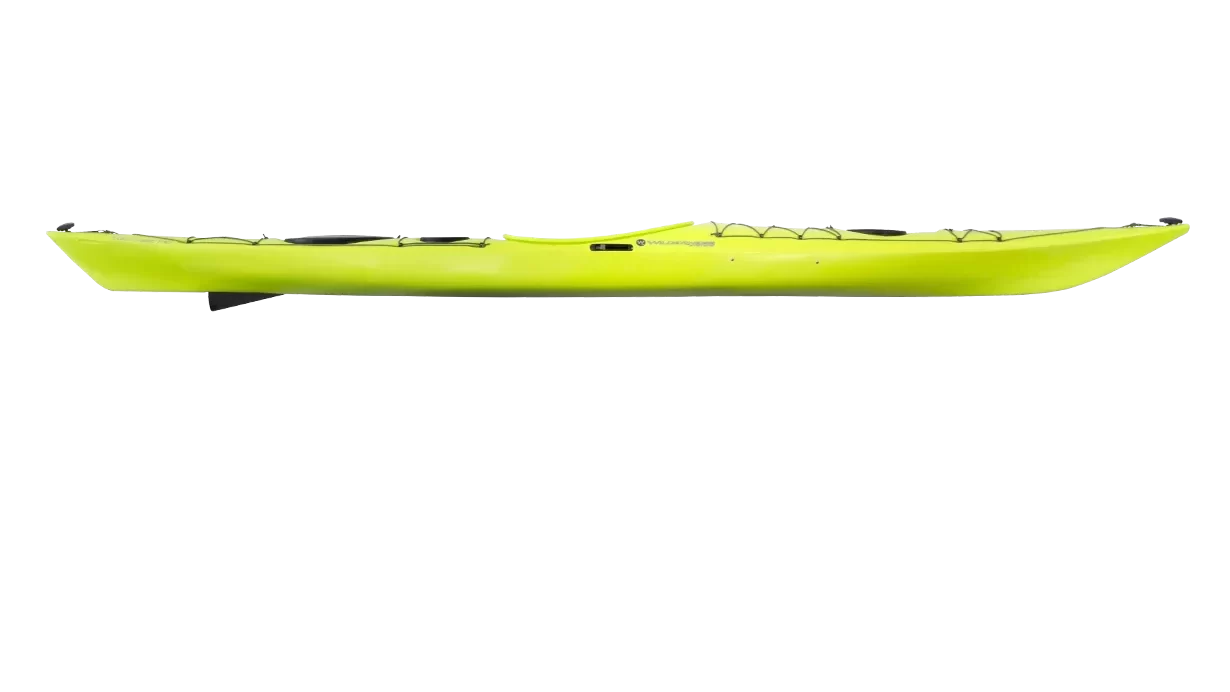Skegs vs. Rudders
Among the components influencing a kayak’s performance are skegs and rudders. Both serve the purpose of aiding in steering and tracking, yet they differ significantly in design and functionality.
Skegs:

Skegs drop down or are fixed fins located near the stern of a kayak. Typically made of plastic or composite materials, skegs are designed to extend vertically into the water. Their primary function is to enhance the kayak’s tracking capabilities, reducing the tendency to veer off course due to wind or currents.
Pros of Skegs:
- Improved Tracking: Skegs are excellent for maintaining a straight course, especially in windy conditions. They help counteract the force of crosswinds, allowing paddlers to focus on their strokes rather than constantly correcting their course.
- Simplicity: Skegs are simple in design and operation. They are easy to install and require minimal maintenance
- Less Drag: Skegs generally produce less drag compared to rudders, resulting in a smoother and more efficient paddling experience. This can be particularly beneficial for long-distance kayaking.
Cons of Skegs:
- Limited Manoeuvrability: Skegs are less effective when it comes to making sharp turns or navigating through tight spaces. Kayakers who enjoy manoeuvring through challenging waters may find skegs less suitable for their needs.
- Fixed Position (some versions): Some skegs are fixed in place, meaning they cannot be adjusted during paddling. This lack of adjustability may limit their effectiveness in varying water conditions. Other skegs can be lowered or raised during operation
Rudders:

Rudders, on the other hand, are adjustable fins typically mounted at the stern of a kayak. Connected to foot pedals, paddlers can control the direction of the rudder, allowing for enhanced manoeuvrability.
Pros of Rudders:
- Enhanced Manoeuvrability: Rudders provide superior manoeuvrability, allowing kayakers to make precise turns and navigate through tight spaces with ease. This is particularly advantageous in environments with obstacles or complex water currents.
- Adjustability: The ability to adjust the rudder angle provides flexibility in different water conditions. Paddlers can fine-tune their steering based on wind direction, currents, or specific navigational challenges.
Cons of Rudders:
- Complexity: Rudders are more intricate in design compared to skegs, involving additional moving parts and a control system. This complexity may result in a higher likelihood of mechanical issues and requires more maintenance.
- Increased Drag: The moving parts of a rudder system can contribute to increased drag, potentially affecting the kayak’s speed and efficiency. This drawback may be more noticeable during longer paddling sessions.
Conclusion:
In the skegs vs. rudders debate, the choice ultimately depends on a paddler’s preferences, kayaking style, and the intended environment. Skegs excel in straight-line tracking and simplicity, while rudders offer superior manoeuvrability and adjustability.
